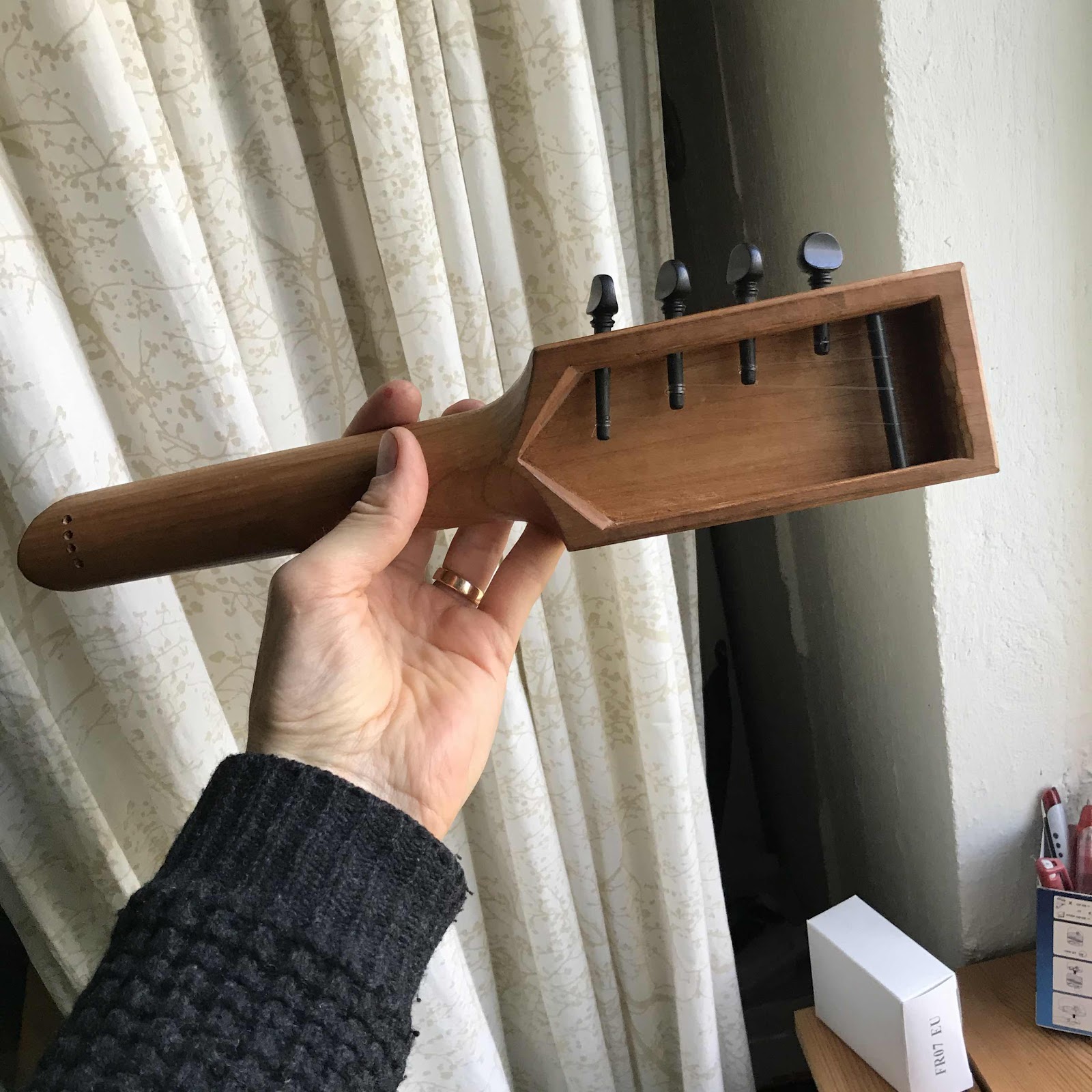Then I cut a wee block from a slightly larger chunk of cherry. Rip saw, natch.
These miniature planes from Veritas are great. Sold as novelties bu I use them a lot. This shoulder plane is my favourite but the wee router plane is great too.
And clamping. Stages not shown include drilling for string rod and tuners, shaping tuners and reaming holes, and finishing.
Also the hardest part of all, drilling the string holes above the zero fret. I can’t think of a jig for that so I do it freehand and hope for the best.

Done. Front...

... back...

... and stamped. The ZS means it’s not been touched by sandpaper. All surfaces are made with sharp cutting tools.

Oh, and this guy. Ambitiously carved and dyed towards the cherry red of yesteryear.

I think it’ll be killer.

Done. Front...
... back...
... and stamped. The ZS means it’s not been touched by sandpaper. All surfaces are made with sharp cutting tools.
Oh, and this guy. Ambitiously carved and dyed towards the cherry red of yesteryear.
I think it’ll be killer.